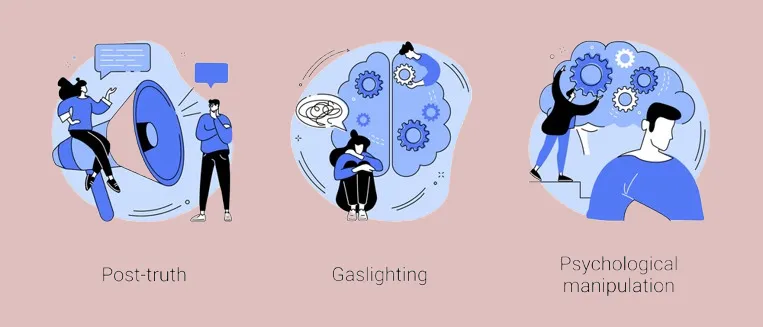Emotional Abuse: Signs, Impacts, and Coping Strategies
Emotional abuse is a damaging reality for many, affecting countless individuals across relationships, workplaces, and communities. Research indicates that emotional abuse is as impactful as physical abuse, though it often goes unrecognized. This form of psychological manipulation can strip away a person's confidence, emotional stability, and sense of safety.
Understanding emotional abuse is essential, not just for those who endure it but for society as a whole. This guide breaks down the complexities of emotional abuse, offering practical strategies and resources for recognizing, addressing, and overcoming it. Explore early interventions for emotional abuse here.
What Is Emotional Abuse?
Defining Emotional Abuse
Emotional abuse, also termed psychological abuse, involves behaviors that harm an individual’s emotional health. It manifests as control, manipulation, and repeated efforts to diminish a person’s confidence and self-worth. Unlike physical abuse, it lacks visible signs, making it insidious and challenging to confront.
Emotional abuse can occur in various settings:
- Romantic relationships.
- Parent-child dynamics.
- Professional environments, including workplaces.
Examples of Emotional Abuse
Common examples of emotional abuse include:
- Gaslighting: A manipulative tactic designed to make someone question their memory or perception.
- Verbal Insults: Using demeaning language or threats to undermine confidence.
- Isolation: Preventing contact with supportive networks, such as friends and family.
- Emotional Neglect: Withholding love, attention, or empathy as a form of punishment.
Learn more about how emotional abuse manifests.
Signs of Emotional Abuse
Recognizing the signs of emotional abuse is critical for taking action. Many victims dismiss these behaviors as minor or justifiable, often due to manipulation by the abuser.
Behavioral Signs
- Excessive control over personal choices, finances, or interactions.
- Frequent use of guilt or shame to manipulate.
Emotional Symptoms
- Persistent anxiety, fear, or feelings of inadequacy.
- Difficulty trusting your instincts or making decisions independently.
Physical Manifestations
- Chronic stress-related illnesses, such as migraines or stomach issues.
- Sleep disturbances caused by heightened anxiety.
Recognizing these signs can be the first step toward breaking free from emotional abuse. If you identify with any of these experiences, explore coping strategies here.
Types of Emotional Abuse
1. Verbal Abuse
Verbal abuse includes insults, yelling, or threatening language aimed at demeaning the victim. It often escalates over time, making the victim increasingly dependent on the abuser for validation.
2. Gaslighting
This manipulative technique involves making the victim doubt their memories or perceptions. Gaslighting is designed to create confusion, forcing the victim to rely on the abuser for a sense of reality.
3. Controlling Behavior
Abusers may monitor every aspect of the victim’s life, from finances to friendships, under the guise of care or concern.
4. Passive-Aggressive Behavior
This includes tactics like the silent treatment, backhanded compliments, or deliberate procrastination to undermine the victim.
5. Emotional Neglect
A lack of emotional support or validation can erode the victim’s self-esteem over time, leaving them feeling unworthy.
To better understand these patterns, read this detailed guide on the types of emotional abuse.
The Impact of Emotional Abuse
Emotional Effects
- Chronic stress, anxiety, and depression are common outcomes.
- Victims may develop Post-Traumatic Stress Disorder (PTSD).
Physical Health Consequences
- Persistent stress can weaken the immune system and increase the risk of heart disease.
- Sleep disturbances, eating disorders, and other health issues may arise.
Social and Relationship Effects
- Emotional abuse often leads to isolation, as victims may feel ashamed or unable to connect with others.
- Trust issues can persist, complicating future relationships.
Why Is Emotional Abuse Difficult to Recognize?
Subtle Nature of Emotional Abuse
Emotional abuse often starts small, with behaviors that might be mistaken for care or concern. Over time, these behaviors escalate into controlling and manipulative patterns.
Societal Attitudes
Cultural norms may dismiss or normalize certain abusive behaviors, making it harder for victims to recognize and address them.
Victims often feel trapped, unsure if their experiences qualify as abuse. Explore tools for identifying emotional abuse here.
How to Deal With Emotional Abuse
Recognizing the Problem
Awareness is the first step. Reflect on patterns of behavior that make you feel devalued, unsafe, or isolated. Document incidents in a journal to help validate your experiences.
Building Resilience
- Self-Care: Prioritize activities that nurture your physical and mental health, such as exercise, mindfulness, or therapy.
- Setting Boundaries: Learn to assert your needs without guilt. This might involve saying "no" more often or limiting interactions with the abuser.
Seeking Professional Help
Therapists specializing in abuse recovery can provide tools to rebuild confidence and establish emotional independence. Online resources and support groups also offer a safe space for shared experiences..
Leaving the Situation
Leaving an abusive relationship requires careful planning:
- Safety Planning: Identify safe spaces, secure finances, and gather a trusted support network.
- Legal Options: Restraining orders or evidence documentation can protect against retaliation.
Recovery and Moving Forward
Rebuilding Self-Esteem
Rebuilding self-esteem takes time but is achievable through:
- Positive affirmations and mindfulness practices.
- Engaging in hobbies that reinforce your sense of identity.
Developing Healthy Relationships
Healthy relationships are built on mutual respect and trust. Take time to heal before forming new bonds, and ensure boundaries are clear.
Embracing Emotional Independence
Emotional independence is the ability to derive validation and joy from within. Practices like meditation, journaling, and focusing on personal goals can help you regain autonomy.
FAQs About Emotional Abuse
Is Emotional Abuse as Harmful as Physical Abuse?
Yes. While physical abuse leaves visible scars, the psychological wounds caused by emotional abuse can last a lifetime.
How Can I Help Someone Experiencing Emotional Abuse?
Offer a listening ear, validate their feelings, and encourage them to seek professional help.
What Are the Long-Term Effects of Emotional Abuse?
Victims often experience anxiety, depression, and difficulty forming healthy relationships. Learn more about emotional abuse recovery.
Conclusion
Emotional abuse is a pervasive issue that affects countless individuals. Recognizing its signs and impacts is the first step toward healing. Whether through self-care, professional support, or legal action, recovery is possible.




.webp)
